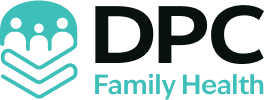TL;DR:
- Medical debt is a leading cause of U.S. bankruptcy despite 90% health coverage.
- Grants for medical bills include government grants, non-profit assistance, charitable organizations, and community health programs.
- Major government programs:
- Medicaid: Supports over 70 million low-income individuals; eligibility varies.
- Medicare: Aids seniors (65+) and disabled; has Parts A, B, D.
- Health Insurance Marketplace: Offers insurance options for non-employees with income-based subsidies.
- Notable non-profits: HealthWell Foundation, PAN Foundation, Patient Advocate Foundation, NeedyMeds.
- To apply for grants:
- Check eligibility.
- Gather documentation.
- Complete applications accurately.
- Follow up on status.
- Check for billing errors.
- Direct Primary Care offers predictable costs and eliminates insurance hassles.
Ever feel like medical bills creep up on you like a sneaky shadow? You’re definitely not alone. Medical bills are a leading cause of bankruptcy in the U.S., even with insurance covering 90% of us; how wild is that? Luckily, grants to help pay medical bills are like a lifeline for many folks out there. They’re often untapped resources that can help you manage those towering healthcare costs. In this post, we’ll dive into the different types of assistance available, like government programs and non-profits, so you can get the relief you need.
Understanding Grants to Help Pay Medical Bills
Did you know medical debt is a leading cause of bankruptcy in the U.S.? Even though 90% of people have some health coverage, unexpected bills can still be overwhelming. That’s where grants to help pay medical bills come in!
So, what are these grants? They serve as a financial lifeline for healthcare costs. Grants and assistance programs aim to ease the stress of medical bills. Let’s break it down further.
Why are these grants crucial? They offer much-needed relief when bills pile up. The No Surprises Act helps manage unexpected charges, but understanding the landscape is still essential.
Who offers these grants? Here are a few types:
- Government grants: Often the first stop for support.
- Non-profit assistance: Organizations committed to helping others.
- Charitable organizations: Offer help when times are tough.
- Community health programs: Local support systems in your area.
These options can assist with medical bills. Many people are unaware of their eligibility for free services. Check what’s available to get the relief you deserve.
Government Programs for Medical Bill Assistance

When medical bills pile up, government programs offer help. Major players include Medicaid, Medicare, and the Health Insurance Marketplace. These programs provide healthcare funding assistance and ease medical debt.
Medicaid
Medicaid is a superhero for over 70 million low-income Americans. It covers services from doctor visits to hospital stays. Eligibility depends on income, family size, and other factors. Check your state’s requirements to see if you qualify.
Medicare
Medicare assists seniors and those with disabilities. If you’re 65 or older or have a qualifying condition, this may be your healthcare solution. It’s divided into Part A for hospital stays, Part B for doctor visits, and Part D for prescriptions. Guidance is available to help you find the right fit.
Health Insurance Marketplace
For those without employer coverage, the Health Insurance Marketplace is key. It offers a range of insurance options to suit needs and budgets. Remember, open enrollment periods are crucial! Income-based subsidies can make premiums more affordable.
These programs are like personal financial aid superheroes, ready to save the day. Explore your options and discover the healthcare funding assistance that is available!
Non-Profit Organizations Offering Medical Aid
Are you feeling overwhelmed by medical bills? Non-profits might be your new best friends! These organizations provide financial aid for medical expenses, offering support to tackle those bills.
Why consider them? Nonprofits don’t just offer help; they provide a lifeline. These groups often cover copays and medication costs and offer grants, making healthcare affordable.
Here’s a list of standout non-profits:
- HealthWell Foundation: Assists with copays and travel costs—perfect for balancing treatment and travel expenses.
- PAN Foundation: Supports medication costs, ensuring your meds don’t break the bank.
- Patient Advocate Foundation: Offers copay relief and financial grants for unexpected expenses.
- NeedyMeds: Provides a database for medication assistance, helping you find savings programs.
These organizations lighten your load and make medical expenses manageable. Have you checked any of these out yet? If not, consider exploring their help.
Applying for Medical Grants: Steps and Tips

Let’s break down how to tackle medical bills with a grant.
First, identify eligibility requirements. Each grant has criteria, so know if you qualify before starting. It’s like checking a party dress code—you don’t want surprises!
Next, gather documentation. Organizing income statements, medical records, and proof of residency makes the process smoother.
Complete the application accurately. Double-check everything; small mistakes can delay progress. Think of it as a golden ticket—you want perfection!
After submitting, follow up on the application status. Patience is important, but a gentle nudge helps. It’s like tracking a package—you want updates!
Finally, check bills for errors and negotiate if needed. Surprisingly, up to 80% of medical bills have errors! Spotting these can save money, so start sleuthing!
Now, dive into these steps and tackle medical bills like a pro. You’ve got this!
Direct Primary Care: An Affordable Alternative
Ever feel like health insurance is a headache? Let’s discuss Direct Primary Care (DPC), a game-changer for those seeking uninsured medical bill support or low-income aid.
What’s the big deal with DPC? It eliminates insurance companies, letting you pay a regular fee directly to your doctor. This covers services like check-ups and lab work without insurance hassles.
Why is DPC great for the uninsured or low-income? It offers predictable costs and comprehensive care, so there are fewer surprises with bills. Without insurance, doctors focus on you—not paperwork.
Here’s a quick comparison:
| Aspect | Direct Primary Care | Traditional Insurance |
|—|—|—|
| Cost | Fixed monthly fee | Variable premiums, copays, deductibles |
| Access | Unlimited visits, direct communication | Limited by plan, approval needed |
| Focus | Patient-centered care | Insurance rules-centered |
See the difference? With DPC, you’re not left with unexpected costs or denied claims. It’s a relief option in healthcare cost grants.
Do you have questions about switching? Imagine a world where healthcare is as straightforward as a Netflix subscription. Explore if DPC fits your needs!
Final Words
Navigating medical bills can be overwhelming, but grants offer a helping hand. From government programs like Medicaid and Medicare to non-profit organizations, a wide range of aid is available. These resources can significantly reduce your financial burden.
Applying for medical grants is straightforward when you gather the right info and double-check your bills. Don’t forget the rising appeal of Direct Primary Care as an affordable healthcare option.
Embrace these avenues for support, and tackle those medical bills with more confidence!
FAQ
Q: Are there free grants to help pay medical bills?
A: Yes. There are grants and assistance programs designed to help with medical bills. These include government programs, non-profits, and charitable organizations offering various financial aid forms.
Q: What are some charitable organizations that help pay medical bills?
A: Charities like the HealthWell Foundation, PAN Foundation, and Patient Advocate Foundation offer financial aid for medical expenses. They can help with copay assistance, medication costs, and even travel expenses.
Q: How can government programs help with medical bills?
A: Programs like Medicaid and Medicare provide significant assistance. Medicaid helps low-income Americans, while Medicare aids seniors and those with disabilities. The Health Insurance Marketplace offers coverage for those without employer-based insurance.
Q: Can I get medical bill forgiveness?
A: Medical bill forgiveness is somewhat rare but possible through programs offered by certain hospitals and financial aid programs. It’s worth inquiring directly with healthcare providers.
Q: Is medical debt being forgiven?
A: While not widespread, some hospitals and charitable organizations offer debt forgiveness or reduce payments based on financial need.
Q: How do I ask for money for medical expenses?
A: You can start by contacting non-profits and charitable organizations that offer medical aid. Explain your situation and inquire about financial assistance and grants.
Q: Who qualifies for financial assistance for medical bills?
A: Qualification for financial aid generally depends on income, family size, and specific medical needs. Programs vary, so checking each one’s eligibility criteria is key.
Q: How can I get help with my medical bills in California?
A: In California, options include Medicaid (Medi-Cal), non-profit assistance, and state-specific programs. Contact local health services to get the scoop on what you qualify for.
Q: What’s a tip for someone struggling with medical bills?
A: Check your medical bills for errors and negotiate if necessary. Be proactive about seeking help from government programs, non-profits, and charitable organizations.

